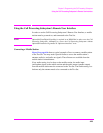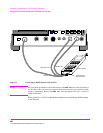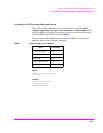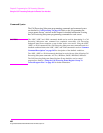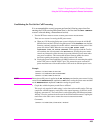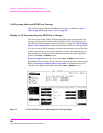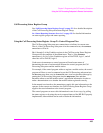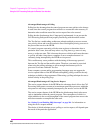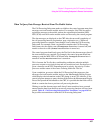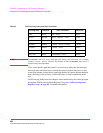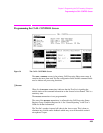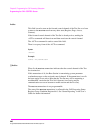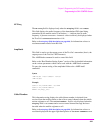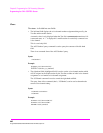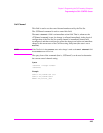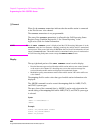
437
Chapter 8, Programming the Call Processing Subsystem
Using the Call Processing Subsystem’s Remote User Interface
When To Query Data Messages Received From The Mobile Station
The Call Processing Subsystem makes available to the control program many data
messages received from the mobile station. For example, if the Test Set sends a
registration message to the mobile station, the registration information (MIN,
ESN, SCM) received from the mobile station can be read by the control program.
The data messages are displayed on the CRT after the successful completion of
the call processing function (registration, page, origination, etc.). When call
processing functions complete, state changes occur within the Call Processing
Subsystem. For example, when a registration completes the Call Processing
Subsystem exits the register state (the
Register annunciator is turned off) and
returns to the active state (the
Active annunciator is turned on).
The control program should only query the Test Set for the data messages after all
the state transitions are complete. For example, the control program should not
attempt to read the MIN, ESN or SCM until after the
Register annunciator is
turned off and the
Active annunciator is turned on.
This is because the Test Set has a multitasking architecture wherein multiple
processes execute on a priority driven and an event driven basis. Each process is
given a timeslice on the CPU depending upon its priority, the priority of other
processes and the nature of the events occurring within the Test Set.
Upon completion, processes within the Call Processing Subsystem pass data
messages received from the mobile station to the Measurement Display Process
which displays the information on the CRT during its next CPU timeslice. If the
control program attempts to query the data fields before the Measurement Display
Process has posted the information to the CRT, it is possible that the fields will be
blank or contain data from a previous call processing function.
Waiting to read the data messages until after all state transitions have occurred
ensures that the data from the most recent call processing function will have been
posted.
Table 45, “Call Processing Subsystem State Transitions,” on page 438 lists
the possible state transitions within the Call Processing Subsystem.



